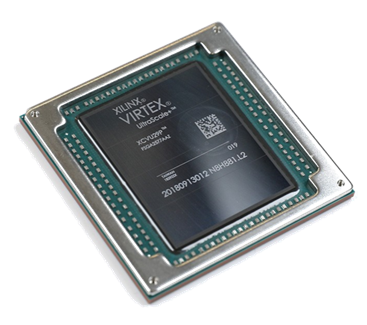What is FPGA Technology?
Microcontroller technology is simpler than field-programmable gate array (FPGA) technology. Usually, code is already present on chips when they are delivered. The hardware cannot be changed by users, only the software. However, this leads to an FPGA's unique selling point, which is the capacity for post-purchase hardware customization.
 When designing
prototypes for their Embedded IC with application-specific functionality, engineers can benefit greatly from this
capability. FPGAs also have the benefit of making it possible to modify devices
using them without having to buy brand-new hardware.
When designing
prototypes for their Embedded IC with application-specific functionality, engineers can benefit greatly from this
capability. FPGAs also have the benefit of making it possible to modify devices
using them without having to buy brand-new hardware.
Consider a situation where laws demand that rear-view cameras in cars operate more swiftly. Say these cameras are powered by FPGAs. Manufacturers can then make the necessary adjustments without having to buy expensive new hardware. Instead, they may modify the FPGA that controls the rear-view camera system in each vehicle. This makes it possible to modify current vehicles without making them outdated.
Field-programmable gate arrays are integrated hardware circuits with programmable logic blocks that aren't built with a predetermined purpose in mind. By connecting logic blocks like AND and XOR with interconnects using a hardware description language (HDL), users can personalize and alter these devices. Modern FPGAs have a large number of logic gates and RAM blocks, enabling complex computations. Some even have converters that, like FPAAs, can change digital signals into analog signals or analog signals into digital signals.
What is the Microcontroller Technology?
A microcontroller (MCU) is a small computer made with a specific function in mind. It shares parts such as CPU, RAM, and input/output devices with other computers. However, unlike a desktop computer that can run many programs, a microcontroller is designed to repeatedly carry out a single operation either on its own or at the user's command.
Various gadgets in the consumer, manufacturing, medical, and other sectors contain embedded microcontrollers. They are economical since they use electricity in milliamps and are energy-efficient. However, the cost of the products they are integrated into can vary greatly.

The similarities between Microcontrollers and FPGA
Examples of flexible integrated circuits that enable producers and end-users to customize the specific functionality of their products are FPGA and microcontroller technology. These tiny, flat, square chips are implanted within numerous pieces of equipment, such as traffic lights and washing machines, to perform specialized tasks, simplifying our lives.
Customization:
Due to their post-production programmability, FPGAs and microcontrollers enable manufacturers and end-users to customize their features for a range of applications across numerous industries. FPGAs are unique in that they offer a wide range of customization options, which makes them perfect for difficult, highly technical applications. At the same time, simpler applications are better suited for microcontrollers.
Building Blocks:
Both FPGA and microcontroller devices are integrated circuits that run on computer logic and binary, therefore they have a lot in common. Integrated circuits, which are made of semiconductor material like silicon, use digital or analog technology and some FPGAs to convert back and forth between the two to carry out calculations and store data. Analog technology uses a linear function of the input to determine the output, whereas digital technology is based on binary logic. Programming a microcontroller or an FPGA requires a solid foundation in computer logic.
The disparities between Microcontrollers and FPGA
 The degree of
customization and complexity is where the FPGA and microcontroller technologies
are most different from one another. They vary from one another as well in
terms of cost and usability. FPGAs essentially provide improved adaptability,
the ability to tackle more challenging tasks, and the capability to modify
hardware after the fact. Keep in mind that using an FPGA necessitates a greater
level of skill and experience.
The degree of
customization and complexity is where the FPGA and microcontroller technologies
are most different from one another. They vary from one another as well in
terms of cost and usability. FPGAs essentially provide improved adaptability,
the ability to tackle more challenging tasks, and the capability to modify
hardware after the fact. Keep in mind that using an FPGA necessitates a greater
level of skill and experience.
Power Consumption:
Even though FPGAs are known for their flexibility and high-speed capabilities, they frequently use more power than microcontrollers, which makes them less suited for systems that use less power. Numerous variables, including low logic utilization because of place-and-route restrictions, underutilized transistors, inefficient clock trees, and prolonged signal routes, might be blamed for this rise in power consumption. FPGAs are less power-efficient than parts like ASICs while being used in emulation and prototyping.
Microcontrollers, in comparison, use a lot less power than FPGAs and operate at much slower processing speeds, usually in the region of a few MHz. They frequently have idle or power-saving modes, allowing for more environmentally friendly operation. Even with slow clock rates, certain microcontrollers can operate at merely a few A and even have sleep currents below 1 A. Engineers typically include microcontrollers on the board to increase power efficiency in FPGA systems.




